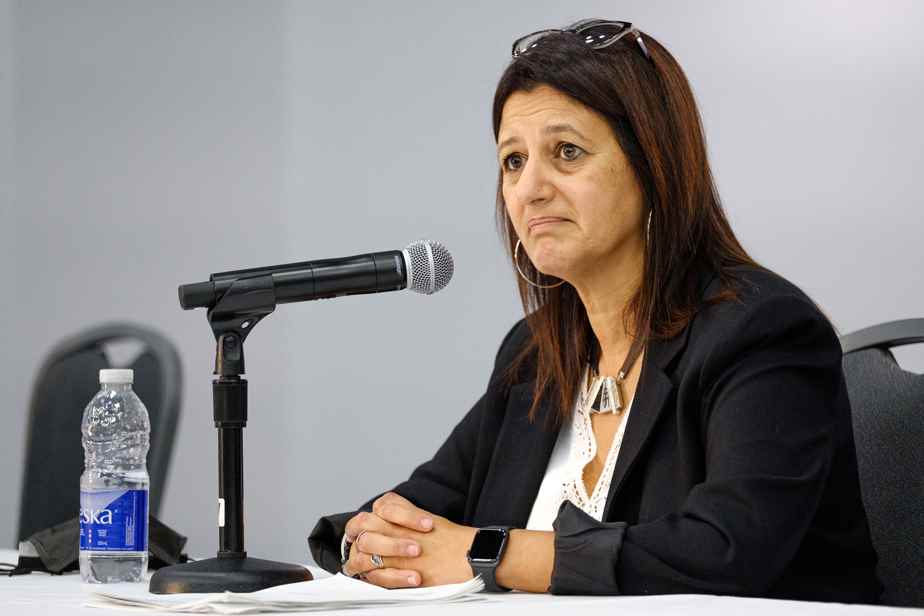Passages from the recent report by coroner Géhane Kamel on deaths that occurred in CHSLDs during the first wave of the pandemic unfairly criticize medical practice in these establishments according to the Fédération des médecins omnipraticiens du Québec (FMOQ).
Posted at 11:00 p.m.
The professional union of family doctors particularly deplores what it describes as “erroneous allusions” evoking that “euthanasias” would have taken place in CHSLDs in the spring of 2020.
In a nine-page letter sent to the Chief Coroner of Quebec, Pascale Décary, the FMOQ harshly comments on certain passages of the report by coroner Géhane Kamel, tabled last month.
“There seems to be a misunderstanding and some judgments and a priori may be unfounded,” says the president of the FMOQ, Dr.r Marc-Andre Amyot.
Mostly remote practice
In her report, coroner Kamel noted, among other things, that it was only several days after the start of the outbreak at the CHSLD Herron, when “more than 50% of the residents were dehydrated”, that the doctors went there. . The coroner wrote that they were content to do telemedicine “despite the need for support and the very large number of deaths”. Remember that 47 people have died of COVID-19 in this Dorval establishment since closed. In her recommendations, the coroner asked the College of Physicians to “review the individual medical practices of attending physicians” at the CHSLD Herron and in other CHSLDs. The College of Physicians had announced that this recommendation would be followed.
For the FMOQ, the coroner fails to mention the context in which medicine was practiced in CHSLDs at the time of the first wave and even before. The letter mentions that “in the panic of the start of the health crisis”, the watchword was “to reduce contact as much as possible”, particularly with people aged 70 and over. On March 15, 2020, the College of Physicians had also published a press release in which it recalled that doctors were “targeted by isolation measures”. Especially since there was a lack of protective equipment, recalls the FMOQ. “We didn’t want to bring COVID into the CHSLDs,” says the Dr Amyot.
Assistant Director of Professional Affairs at the FMOQ, the DD Danielle Daoust recalls that the vast majority of doctors who work in CHSLDs have a so-called “mixed” practice. That is to say that they practice at the same time in the emergency room, in hospitalization or in the office in addition to working on average in eight different CHSLDs. In the case of the CHSLD Herron, the DD Daoust mentions that most doctors “worked in other CHSLDs and other residences for the elderly”. “The risk was that they would carry the virus into other settings,” she says.
The DD Daoust adds that normal practice in CHSLDs involves doctors visiting their establishments 2 to 4 times a month and being on call the rest of the time. “Even before the pandemic, they did not move on the spot to assess a user”, is it written in the letter. The DD Daoust indicates that the coroner’s report mentions the fact that vital signs were not taken regularly in CHSLDs. “But no one gets their pressure taken every day in CHSLDs,” she says. “A CHSLD is considered a living environment. A living environment, people do not have medical visits every day, “adds the Dr Amyot.
Without being able to quantify the phenomenon, the DD Daoust mentions that some CHSLD doctors said they wanted to give up their practice after the publication of the coroner’s report, believing that the expectations placed on them were “unrealistic”.
The FMOQ affirms that only 3% to 6% of the services billed in CHSLDs during the first wave were carried out in telemedicine. A practice that is not necessarily harmful, says the FMOQ. The proof: the Chinese hospital in Montreal, cited as an example for having managed the first wave well, is among the 10 CHSLDs that have used telemedicine the most in the metropolis, notes the FMOQ.
“There was no mass euthanasia”
The FMOQ also says it is “perplexed and animated by a certain incomprehension regarding what emerges from the Coroner’s report in connection with end-of-life care”. The DD Daoust speaks in particular of “allusion to euthanasia” which would have occurred in CHSLDs in connection with the use of respiratory distress protocols. The FMOQ says that doctors were “shaken and amazed to read certain conclusions of the coroner” on this subject.
Respiratory distress protocols administered to relieve patient pain have long been used in the network and have only been adapted to pandemic reality, says Dr.D Daoust. In particular to allow an intervention with greater physical distance from the patient.
The data that came from Italy and the United States at the start of the pandemic also led to a modification of the dosages used, explains the FMOQ. Rather than giving a first dose of morphine of 2.5 mg, 5.0 mg was immediately offered. That’s the equivalent of a Dilaudid tablet for a fracture, says the DD Daoust who “doesn’t think we’re going to kill patients with that”. “The goal was to relieve their respiratory distress” and not to cause palliative sedation, she says. This change in dosage was decided because the virus was causing “great respiratory distress, difficult to control, very quickly”, explains the DD Daoust. For her, “the tragedy would have been not to relieve these patients”. The DD Daoust believes that for the families, it must be clear: “There was no mass euthanasia”.
At the coroner’s office, it is mentioned that Ms.e Pascale Descary “took note of the observations” of the FMOQ and forwarded them to coroner Kamel and her fellow assessor, Dr.r Jacques Ramsay. “With all due respect for the essential independence of coroners in the context of their mission, the Chief Coroner will not comment on these observations,” it says.

